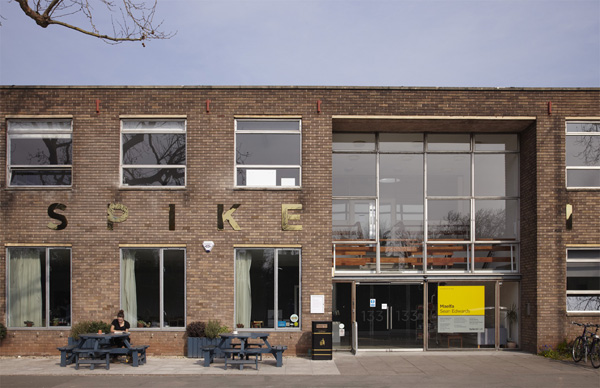About Spike Island | Challenges for Residents
About Spike Island
Spike Island is a centre for the presentation and production of contemporary art and design based on Bristol’s harbourside. Housed in an 80,000 sq ft former tea packing factory, the organisation is unique on two fronts: it is a place where artists and the public can meet, enabling audiences to engage with artists’ research and production; and it creates pathways for artists and other creative producers by nurturing a rich arts ecology that supports professional development beyond the confines of the organisation. It plays a key role in fostering a creative culture for Bristol and the South West as it builds relationships nationally and internationally.
The support of art and artists, and audiences’ encounters with them, underlies everything Spike Island does. To this end it seeks to develop fruitful synergies across the building which is home to:
- Seventy low-cost artists’ studios
- Fifty desks for design businesses
- Other arts organisations such as Picture This, Works|Projects, Situations, Spike Print Studios
- A range of creative businesses in fields including fine art fabrication, illustration, graphic and web design, print, film and video production, CGI, typography, advertising and animation
- Students and staff from the University of the West of England Fine Art BA programmes
The building is a thriving and productive hub, open 24 hours a day, 365 days a year, with approximately 200 people working in the building and a further 300 studying here. The busy café is a meeting point for Spike Island’s visitors and tenants, serving a range of drinks, snacks and hot meals made from locally-sourced and ethical ingredients wherever possible.
Spike Island has one of the country’s largest gallery spaces in which eight to ten exhibitions are presented each year across all media. These almost always feature newly commissioned work, such as Maelfa, by Sean Edwards, and Faded Paper, by Sara MacKillop. The gallery programme is supported by a regular series of events and activities intended to open up artists’ practices and wider conceptual concerns to audiences. Recent speakers include Owen Hatherley, Iain Sinclair, Jan Verwoert and Emily King. Monthly strands such as I am Making Art, artist-led activities for all ages, and Write Club, a peer-led writing collective, encourage hands-on participation in the creative process, while the Extra Curricular reading group provides a platform for discussing contemporary art and cultural theory.
National and international residencies help expand professional networks for those based here, while graduate residencies provide the time and space for young artists from UWE and University College Falmouth to establish their practices. Spike Island’s Associates Programme is a network of over 90 emerging artists, designers, writers, curators and other creative practitioners. It fosters a culture of peer learning and collaboration, offering a range of opportunities for personal and professional development. Spike Design offers affordable workspace and tailored business support for newly established design practices. Its dynamic community cultivates an environment of collaboration and criticality.
Challenges and Opportunities
Because Spike Island is a large building, operating on many fronts and catering to a number of diverse users and audiences, it can be difficult to represent the organisation as a whole and to ensure good communication between the different interest groups here. With several hundred people working here at any one time and an extended network of collaborators and partners locally, nationally and internationally, there is an enormous amount of valuable and interesting data and content being produced at any given moment. As a staff team, however, we lack the skills and capacity to record and represent this in a meaningful way.
We are currently working towards breaking down internal barriers between user groups and are in the process of developing a new website as part of a larger organisational development project. This is a significant step toward communicating what Spike Island does in a clear and consistent way: the site will be brought in line with our new visual print identity and we are reconsidering the language used to describe the organisation’s various constituents and public offers.
Updating the website is the beginning of what we hope will be a more defined digital strategy for the organisation. Such a unique and complex space calls for innovative solutions to communications both internally and externally – embracing digital technologies is key to doing so.


